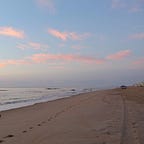Digital Studies Final Project
Do something on the web about the web:
For my final project, I was inspired by “What’s Behind Door Number 10101?” to do a textual analysis. In my Fairy Tales in Literature class with Dr. Mathur, we read several adaptations throughout the semester of different classic fairy tales, and we compared the original to the adaptations, seeing how the major themes have shifted. So, I thought it would be interesting to do a textual analysis of one of my favorite fairy tales: Beauty and the Beast by Jeanne-Marie LePrince de Beaumont.
When Beauty and the Beast is mentioned, younger generations tend to first think of Disney’s animation, “Beauty and the Beast” (1991). Disney’s fairy tale adaptations have continuously been loved by many, but they actually vary quite a lot from the original fairy tales. One important theme in Beaumont’s tale that was altered by Disney was Beauty’s (Belle’s) portrayal to the villagers. In Beaumont’s work, Beauty was loved by everyone and accepted by society because she was the perfect example of a traditional female who appeared fragile had little to no agency. However, Belle in Disney’s adaptation is described as odd by the villagers because she defies traditional gender roles; Belle is intelligent and independent instead of delicate or girly like the Bimbette who fawn over Gaston. By using Wordcloud, I hoped to see if the text itself supported the observations that were made comparing the original and the adaptation.
Before beginning the project, I reread Beaumont’s Beauty and the Beast (1757) and rewatched Disney’s Beauty and the Beast (1991).
Below is the word cloud produced for the original tale:
Process:
To make this word cloud, I copied and pasted an online text found on pitt.edu (see below) into wordcloud.com. Then, I adjusted the size and colors of the image to include a majority of the original text.
Analysis:
Looking at the image above, the two words that stand out most are “Beauty” and “Beast.” This is expected because they are the two main characters of the fairy tale. Some of the next largest words are “good,” “great,” and “father.” These words all point to Beauty’s character in the original tale. She was always portrayed as the good girl who obeyed her father’s wishes. Another word that appears frequently in the text is “monster.” Beast in the original fairy tale is described as a monster who is not only ugly, but also acts like a monster by constantly gaslighting Beauty. I was very satisfied by the word cloud that was produced for the original fairy tale. Next, I made a word cloud for Disney’s adaptation.
Below is the word cloud produced for Disney’s adaptation:
Process:
To make this word cloud, I searched the script for Disney’s Beauty and the Beast. Then, I decided to remove all speaker names and actions in parentheses because I wanted to compare just the spoken words. I tried to imagine the adaptation without any animation/pictures.
For instance, in the screenshot to the left, I removed “BAKER:,” “BELLE:,” and “(BELLE jumps over to the bakery).”
After removing all speaker names and actions in parentheses, I copied and pasted the text into wordcloud.com and generated the image above.
Analysis:
I was surprised to see some of the larger words on Disney’s word cloud. The two largest words on the image are “Belle” and “Gaston.” It was interesting to see how, instead of “beast,” “Gaston” was spoken more frequently in the adaptation. (It is important to note that a Gaston-figure was not present in the original tale by Beaumont; it was Disney’s original creation.) This contrast could be pointing to Gaston’s popularity as the more masculine character when compared to the beast. There was even a whole song dedicated to Gaston and his masculinity while there was no song solely about Beast at all. This could also show how the adaptation frames Gaston as the “ideal” male over the beast.
Another key difference is the absence of “good” and “great” as large words in Disney’s word cloud. In Beaumont’s word cloud, “good” and “great” were two of the larger words used frequently to describe Beauty’s character. However, it’s interesting to see how those word were not used as often in Disney’s adaptation. This could be Disney walking away from traditional female roles of fragility and delicacy by making Belle’s character have more agency and independence. The shift also closely aligns with the rise of feminism and advocacy for women’s rights which could have been a factor to the formation of Belle’s character.
Relevancy?
So, how does this relate to the prompt: do something on the web about the web? Using the textual analysis tool, we are able to follow some of the trends that have occurred since the publication of Beaumont’s Beauty and the Beast in 1757. Wordcloud helps illustrate how the text from the past has changed with the addition of the web which encompasses animation, color, music, and — appearing more recently — blog posts reacting to Disney’s adaptation. The two word clouds reflect society’s response to these trends that are supported by the advancing web; they show how some major themes present in Beaumont’s Beauty and the Beast have been altered in the making of Disney’s adaptation. In addition to analyzing Beauty and the Beast, more fairy tales (The Little Mermaid by Hans Christian Andersen, Cinderella by Brothers Grimm, etc.) could be compared to modern adaptations to see if there are any similar correlations.
Links to sources:
Beauty and the Beast (1757): https://www.pitt.edu/~dash/beauty.html
Beauty and the Beast (1991) script: http://www.fpx.de/fp/Disney/Scripts/BeautyAndTheBeast.txt
